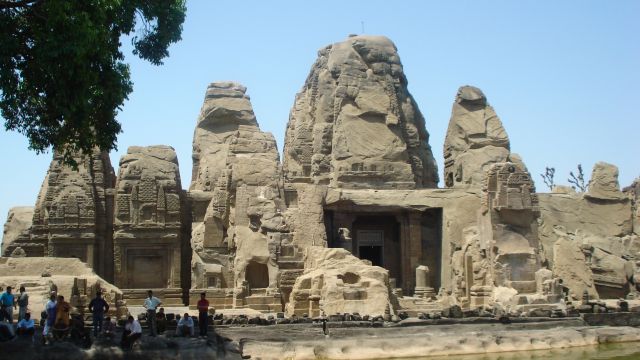“Monuments are the grappling-iron that bind one generation to another” – Joseph Joubert
As civilizations fall and rise, the ancient remains – the monuments become the souvenirs coming from the past and to be handed over to the future generations.
Monuments act as a footprint of history on the pages of time.
The monolithic rock cut cave temples of Masroor in Kangra district of Himachal Pradesh is one such example and description of architectural gem preserved over centuries and for the future generations to come.

Also known as the Ellora of Himachal and Himalayan pyramid , it is an ideal location for the tourists, backpackers and history lovers.
My quest to explore some enthralling destination brought me to this dynamic and magnificent piece of architecture steeped in history.
A single rock cut into 15 temples is one of the most enigmatic yet one of rare sites to be found in northern part of India, yet at the same time it is one of the least hyped tourist places in the State of Himachal.
As the history goes:
This temple complex was excavated and discovered in the year 1875 but it was largely destroyed during the Kangra earthquake in the year 1905. In the year 1913, on insistence of a British officer this site was considered as a heritage site.
The temple ruins have been revived and preserved with utmost effort and care and offers one of the most panoramic views – a government senior secondary school, an Anganwadi Kendra, a small tea shop in the close vicinity and a pond in front of the temple complex .
The temple walls on outside and inside are full of floral, geometric and animal motifs, depicting the life style of those times.
This astounding, mystifying and gigantic construction has been exquisitely carved on a sand stone but due to time and nature’s ruthless furry unleashing on it, it has become more of a celestial puzzle, which claims to offer an incomplete staircase to the heavens and reminding us of that mystic, unknown and unseen world.
This heritage site has many myths and legends associated with it. It appears more like a building blocks of the Gods in a state of jigsaw puzzle with floating stories and prophecies around the age of epic Mahabharata and Pandavs visiting this place during exile.
As one observes the place with scrutiny, every piece of the temple walls has a story of craftsmanship and how painstakingly it was chiselled by the masons.
As the Sun sets , the ruins of the temple change various hues and shades of golden, yellow and orange.
It’s a visual treat for the visitors like me, to witness such delightful scenes and vouch for ‘Incredible Himachal’ but those who come looking for this monument as a secluded spot on a quaint hill and display their love on the walls, it’s a strict no for them as they will be rendered with disappointment.
Please do not even think of showing your artistic skills in form of a graffiti on these temple walls. As every nook and corner of the temple oozes with the artistic excellence and genius in form of carvings on the temple walls.
The main temple has the idols of Lord Rama, Sita and Lakshman ,but it strictly instructs you, that no offerings will be accepted , all that is required is reverence and respect for the sanctity of the temple in form of silent prayers ,apprection and decorum to be maintained.
The temple complex is flawless as one does not find any kind of scribbling on the walls, no eateries around , only a small tea shop outside the premises, it is a true example of clean and green Himachal.
The closure of first floor of the temple has barred the entry of the visitors due to their excessive display of the selfie lover syndrome.
The caretakers of this historical monument, make sure that visitors strictly adhere to the rules and it is their effort that has shielded and protected this heritage site from the brazen attitude and wanton acts of some unruly tourists.
And henceforth , the Masroor monolithic cave temples becomes an apt example of Incredible Himachal, as these untouched monuments have touched my heart immensely.
Monuments of our country are the reflection of our history. But preserving and restoring them is equally important.

Anjali, with a masters in English is a teacher on a sabbatical, loves travelling and spending time in the lap of nature, observing its bounties and being thankful to the hills.



